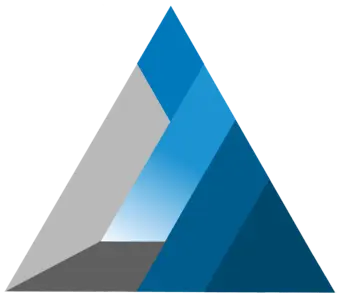Google’s quantum AI team recently announced significant progress in quantum error correction, utilizing surface code error correction to substantially lower error rates and extend the lifespan of logical qubits beyond that of physical qubits.
This advancement marks a milestone in quantum engineering, affirming Google’s leadership in the quantum computing race.
Written by | Wuxie
Four years ago, I translated a review article in Science titled “The Next Super Challenge of Quantum Computing,” focusing on quantum error correction.
At that time, Google Quantum AI had just demonstrated “quantum supremacy,” drawing global attention. Since then, numerous top quantum computing teams have been tackling this challenge, with Google at the forefront.
Recently, Google published its latest findings on arXiv, titled “Quantum Error Correction Below the Surface Code Threshold”.
They achieved surface code error correction with a code distance of 7 (d=7) on a chip with 105 qubits and with a code distance of 5 (d=5) on a 72-qubit chip, including real-time decoding.
In both cases, they surpassed the error correction “break-even point,” where the storage lifetime of encoded logical qubits exceeded that of all physical qubits used in the encoding.
Specifically, a logical qubit with a code distance of 7 achieved a lifespan of 291 microseconds, while the average lifespan of all involved qubits was 85 microseconds, peaking at 119 microseconds.
This represents a 2.4-fold extension in quantum information storage, a significant engineering feat that bolsters confidence in achieving practical logical qubits in the future.
This breakthrough is comparable to Google’s previous “quantum supremacy” and rivals recent advancements in quantum error correction within neutral atom systems.
Google’s Key Findings:
- Surface Code Performance: The left graph shows logical error rates under surface code error correction at various code distances. Data for two d=3 error correction codes from 2023 are included, with the flatter curve indicating a lower error rate. The right graph shows the error suppression coefficient (Λ) for error rate fitting, calculated as 2.14. This means the system error rate is less than half the threshold for surface code error correction, with error rates dropping exponentially as code distance increases.
- Quantum Error Correction Principles: Physical qubits frequently encounter errors from factors such as photon interference, material defects, or cosmic rays. Errors accumulate and can severely degrade quantum computing performance. Quantum error correction counters this by using redundant qubits and encoding them to detect and correct errors, allowing logical qubits to perform reliably.
- Surface Code Technology: Surface codes, a type of topological code, offer scalability and engineering feasibility, making them ideal for superconducting quantum chips. These codes require only nearest-neighbor coupling and have a low error rate threshold, making them a key technology for quantum error correction.
Advancements in Surface Code Error Correction:
- Error Thresholds and Chip Performance: Google’s chips displayed single-bit gate error rates of 5/10,000, two-bit gate error rates of 4/1,000, and read error rates of 8/1,000. These complex error dynamics are better captured by a “weight-4 detection probability” measure, which was 8.7% for the d=7 system. Improvements are attributed to “gap-engineering” techniques, although details remain undisclosed.
- Real-Time Decoding Technology: Achieving real-time decoding is crucial for fault-tolerant quantum computing. Google successfully implemented real-time decoding for d=5 error correction over one million cycles, with an average delay of 63 microseconds. Future challenges include extending this capability to higher code distances.
- Testing Error Rate Limits: Google tested a “repetitive code” with a code distance of 29 to assess system error limits. Results showed that the error rate saturates at around one in ten billion (10^-10) due to rare correlated errors, likely caused by cosmic rays impacting the chip.
Implications and Future Challenges:
Google’s advancements underscore the company’s leading role in quantum computing engineering. However, there is concern that the gap between U.S. and computing capabilities may widen.
The collaborative model used by Google, involving over 200 participants from institutions like DeepMind, MIT, and ETH Zurich, showcases a large-scale engineering approach that is currently lacking.
Addressing this disparity requires new strategies, better coordination between engineering and scientific efforts, and robust support for top talent.
Postscript: Shortly after this breakthrough, Microsoft Azure Quantum demonstrated an end-to-end integration of high-performance computing, quantum computing, and AI in molecular simulation, using logical qubits protected by C4 code error correction.
This highlights the growing importance of quantum error correction as a central focus in quantum computing engineering, underscoring the urgent need for its quantum computing capabilities.
Keep visiting for more such awesome posts, internet tips, and lifestyle tips & remember we cover,
“Everything under the Sun!”
Follow Inspire2rise on Twitter. | Follow Inspire2rise on Facebook. | Follow Inspire2rise on YouTube
Discover more from Inspire2Rise
Subscribe to get the latest posts sent to your email.







